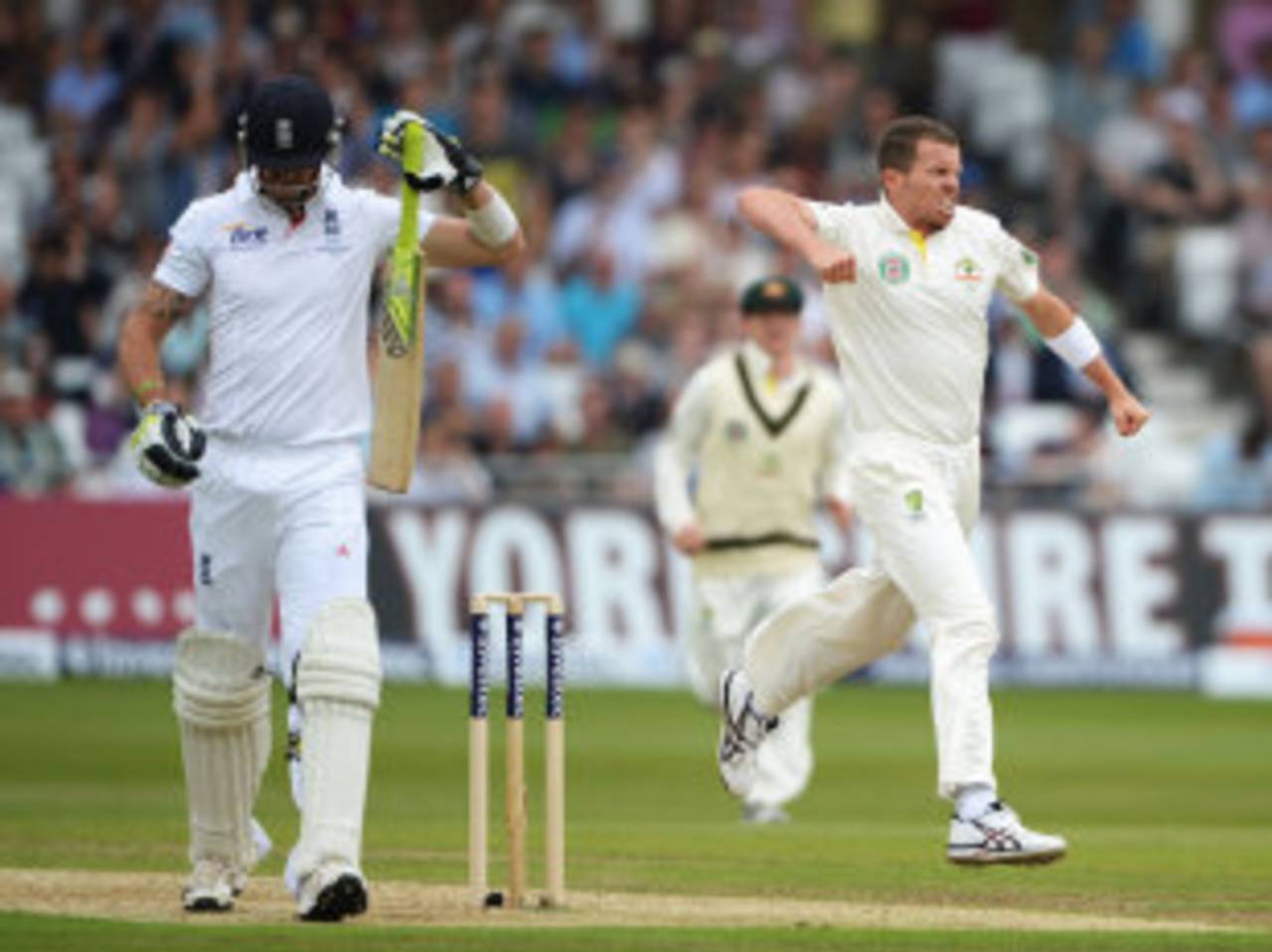Coming into this Test, if the two sides had taken a look at the stats at Trent Bridge over the last ten years, they'd have known that run-scoring would be difficult in the first Investec Ashes Test: since 2003, the average runs per wicket here (excluding extras) was 26.84 before today's play. With a six-Test cut-off, only Sabina Park, Jamaica, has a
lower average. On the first day of the Ashes Test, though, the average runs per wicket was even lower - 20.71 - as 14 batsmen were dismissed on a frenetic day of cricket; despite the loss of so many wickets, the runs were still scored at an impressive 3.63 per over.
First of all, the toss. Alastair Cook did the right thing, given that England have won their last three Tests after choosing to bat first here - against Pakistan (2010), Australia (2005) and South Africa (2003). On this occasion, though, England's batsmen didn't back that decision with a solid display: for the
fifth time in six Tests in 2013, none of their top four batsmen got a half-century in the first innings. As it turned out, there were no half-centuries at all from any of the 17 batsmen who batted today. England finished with 215, their lowest
first-innings total in a home Test after winning the toss and batting first since the Ashes Test at Headingley in 2009, when they were bundled out for 102.
That also meant the Trent Bridge jinx for
England's top order continued. None of their current top-order batsmen average 40 here, and after today's performances most of the numbers only went down further. Jonathan Trott had never scored more than 38 in his six previous innings here and, while he improved on that by ten runs, he still missed out on a half-century. His captain Alastair Cook did worse, scoring 13 to take his aggregate from 12 Test innings at this ground to 208, at an average of 18.90. Together, Cook and Trott have scored 378 runs at this ground from 17 innings, at a combined average of 22.23.
The Australia bowler who caused the most damage was Peter Siddle, whose 5 for 50 was his second five-for in only
six Tests in England. It's the only overseas country where he has more than one five-for. In fact, Siddle's strike rate in England, of 42.1 balls per wicket, is the
third-best for any overseas bowler who has taken 25 or more wickets in England; only Glenn McGrath and Mohammad Amir have done better. One of Siddle's victims was Kevin Pietersen, who fell to him for the fifth time in 171 balls in Test cricket. Pietersen's only scored 88 off those 171 balls, which gives him an average of 17.60 against Siddle - there's no question about who's winning that battle, though Pietersen will have opportunities in this series to redress the balance.
England were dismissed cheaply, but they weren't done for the day. Their current fast bowlers all have
excellent records at Trent Bridge and, despite the absence of Stuart Broad, the new-ball duo of James Anderson and Steven Finn made Australia's batsmen sweat in the last session. Anderson demonstrated his mastery over swing, and over Australia's captain, dismissing him for the seventh time in Tests, at the total cost of only 153 runs - an average of 21.85, which is almost as emphatic as Siddle's domination of Pietersen. Anderson thus joins Ishant Sharma and Dale Steyn as the bowlers who've
dismissed Clarke most often in Tests.
With Ed Cowan playing an expansive shot and getting out first ball before Clarke's dismissal, it meant Australia's No.3 and No.4 batsmen were both out without scoring, a phenomenon that's only happened
13 times in their Test history. The last time Australia suffered such a fate was in 2008, against South Africa in Perth, while the last time England inflicted this misery upon Australia was way back in December 1936. Of these 13 instances,
only twice have Australia recovered from the setback to win the Test, and neither of those was against England. As omens go, that's not an encouraging sign for Australian supporters.
